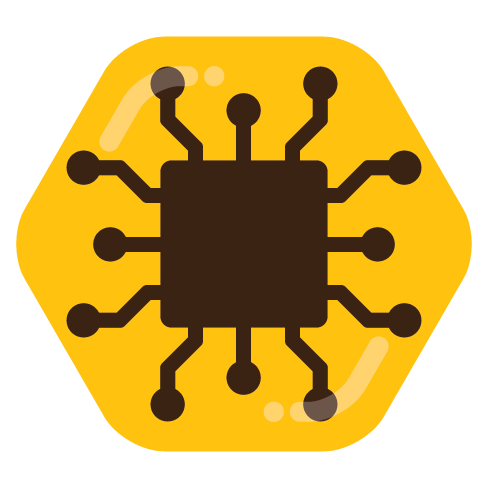

You’ve lost another submarine?


You’ve lost another submarine?


No. A full breakdown here https://youtu.be/1dhvry6E0jA


The power aspect is a lot bigger of a factor than I would have thought. I had an old computer I was going to use as a server for Foundry that I could keep up all the time, but when I measured its wattage and did the math, it would cost me $20 a month to keep on. A pi costs like $2 to keep running, so it paid for itself pretty quick
At least plugging them all into Google translate, the pronunciations are actually all pretty similar, with Swedish being the most dissimilar


Has science gone too far?


Alternate take: I want something that does B, so I research methods of doing B and find one that’s good. Good thing I’m a smart boy that doesn’t make purchasing decisions based on what the marketing department says things do.
There’s plenty of good reasons to criticize or be concerned about LLMs. You don’t need to make up dumb ones.


Sure, but false advertising has nothing to do with how good an invention is, that’s a marketing problem.


No? I have a pair of shoes that advertise as being great for running and walking. I love walking in them, but they suck for running. Are you saying the shoes suck and I shouldn’t use them at all, even though I like walking in them?
Tools don’t care about intent, and neither should you. Only things that work and things that don’t. And if it doesn’t work, you should use a different tool.


It’s gotten so seamless now, and wine has gotten pretty good. I can download a Windows executable, double click it, go through the regular Windows installer, and then have it make a shortcut on my desktop which will launch it.
Your average user won’t even know all the Dark Magics making it possible, or that they were supposed to have looked around for a Linux alternative, it just works


I agree with you about CDs but I’m not sure I understand your point about physical copies. If they’re still buying and shipping a physical SD card, from a production perspective, I’m pretty sure that’s the same cost regardless of whether it’s a key or a full game. And considering that digital copies of games tend to be the same price as physical ones anyways, I think the physical aspect is pretty negligible and doesn’t factor into the price in any real way.
I think they’re making a joke that one of the definitions of “revolution” is making a complete circle. In the cartoon, “reform” is making a ton of revolutions.


I don’t disagree with your conclusion, but I think part of why it sucks now is all the Search Engine Optimization, of people trying to game Google into showing you their website, and only necessarily the one most pertinent to your search


I’ve used them both a good bit for D&D/TTRPG campaigns. The image generation has been great for making NPC portraits and custom magic item images. LLM’s have been pretty handy for practicing my DM-ing and improv, by asking it to act like a player and reacting to what it decides to do. And sometimes in the reverse by asking it to pitch interesting ideas for characters/dungeons/quest lines. I rarely took those in their entirety, but would often have bits and pieces I’d use.


I probably do this a good bit without really thinking about it. I don’t really care about walking in mud/grass and I like to give people their space. The fact that they continued to walk on the grass after they passed makes me think it wasn’t a big deal for them either.
I’m always reminded of https://youtu.be/ZI0w_pwZY3E for Skype


I mean, I guess, but that’s only a selling point to the small number of people without smartphones, which isn’t a large enough group to make it a sound business strategy.


Also, the “(after federal incentives)” is doing a lot of heavy lifting here. The basic option for the 2023 Bolt comes out to about $20K after federal incentives, but you get way more range and a bunch of those “luxury” features this is missing. Considering how cheap low-end smart phones are, I have a hard time imagining that infotainment systems actually add more than 1-2% of the cost of the vehicle. Feels more like a type of virtue signal than a real cost-saving measure.


For me, the huge value-add of Discord is for gaming (and is what Discord was created for). In college, my friends and I were originally using Skype calls when we’d play League together, but it was super annoying; essentially in order to not have to create a new call and add everyone who happened to be playing every time we just had one giant call with everyone we’d “redial” when playing. The downside is that if you were on Skype but not part of the game (in class or something) you’d get the Skype call invitation and have to decline it.
Switching to Discord was fantastic. We’d just have a persistent voice channel for different games, and you could chill in there to indicate it’s what you were playing or wanted to play, and if someone wanted to join they just jump on the call. It was also nice for organizing our text chats into different subjects (using different text channels), so if you were trying to ask if anyone had any advice for a certain class, you wouldn’t have your messages drowned out by people talking about news about a upcoming game. We just have a “games” text channels and a “classes” text channels and a “weekend plans” text channel, etc. This became particularly important as the server grew from friends to friends of friends and would’ve been overwhelming to have everyone stuck in one chat.
That’s pretty much been the extent of my Discord use, and I’m continually amazed to hear how others have been using it. I’ve seen the “join us on Discord, X, Facebook, etc.” for different games coming out, but never thought much of it or ever considered doing that.


it isn’t possible to synthesize neutronium at that amount or handle that much safely.
To be clear, the neutronium you’re talking about here is the one that is theorized to exist at the core of neutron stars? Could you elaborate on how much has been synthesized and could be handled safely?
What would be more intuitive? It seems to me to be a
a=1 b=a a=2
Where you’d expect b to be 1, which is the case for bash.